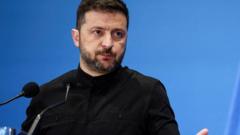Amid escalating violence, conflicting statements regarding cease-fire proposals have complicated relief efforts in Gaza.
Confusion Surrounds Cease-Fire Talks Between Israel and Hamas

Confusion Surrounds Cease-Fire Talks Between Israel and Hamas
Divergent messages from Israel, Hamas, and U.S. officials raise uncertainty over ongoing negotiations.
Tensions in the Middle East have escalated as Israel, Hamas, and the Trump administration have exchanged contradictory messages about the status of cease-fire negotiations aimed at resolving the ongoing conflict in Gaza. With President Trump exerting significant pressure to end the hostilities, Israeli forces have intensified their strikes against Hamas, leading to high civilian casualties, including over 70 deaths reported by the Gaza health ministry on Monday.
The situation has been further muddied by inconsistent communications from the involved parties regarding the cease-fire discussions. Hamas's Al-Aqsa television reported that the group had accepted a cease-fire proposal from Steve Witkoff, the Middle East envoy for the Trump administration. Witkoff, however, quickly rebuffed this claim, stating that Hamas's response had been "disappointing and completely unacceptable."
Israeli Prime Minister Benjamin Netanyahu expressed cautious optimism about the negotiations earlier, indicating he might have positive news to share soon. However, he later clarified that his remarks were figurative, attributing the delays to Hamas's actions.
In a continuing back-and-forth, Basem Naim, a Hamas representative, reiterated the movement's assertion that they had accepted Witkoff's proposal and were now awaiting Israel's response, suggesting a possible pathway to dialogue despite the rising death toll. The international community watches closely as the precarious situation unfolds.




















